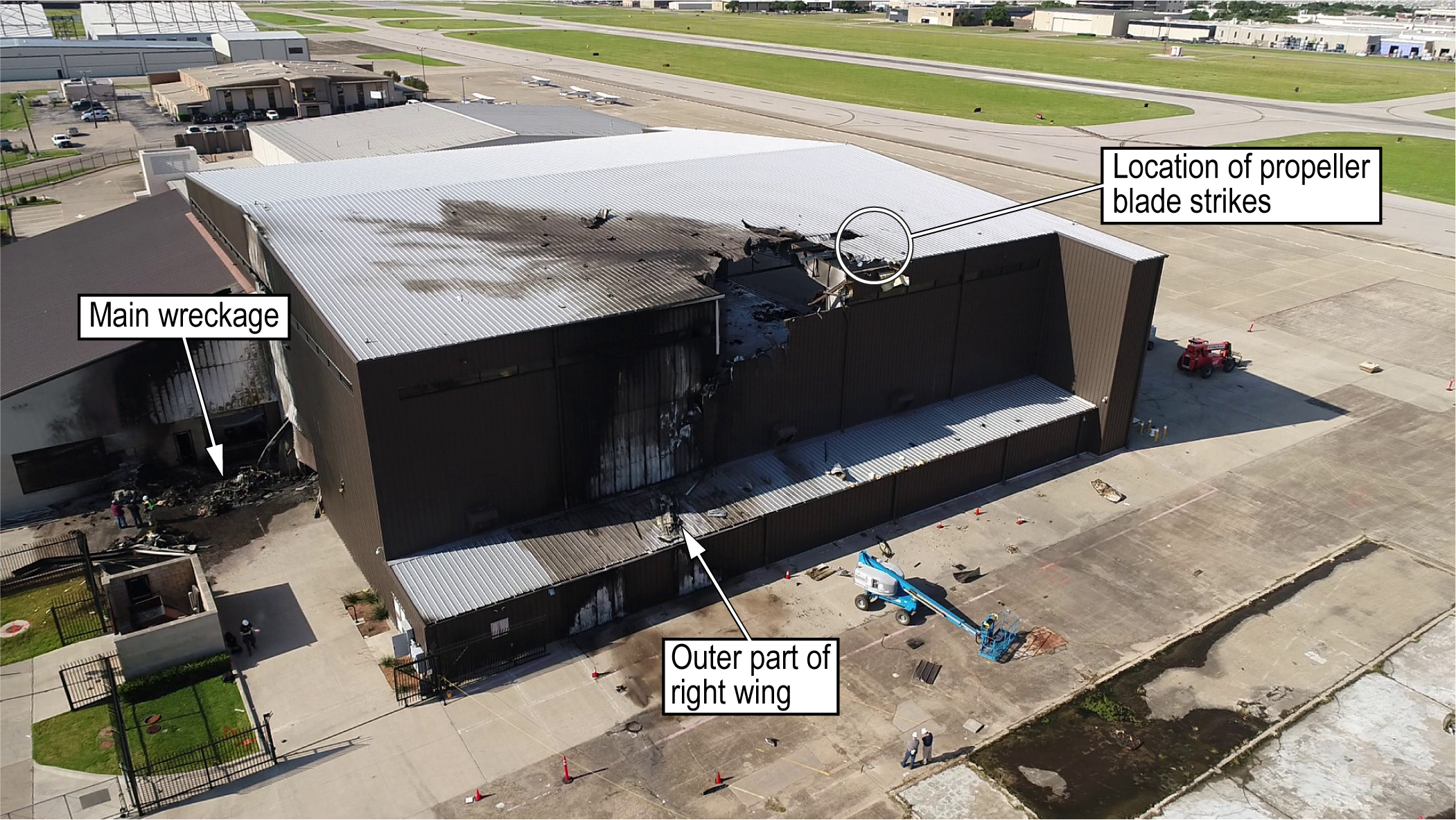WASHINGTON (May 18, 2021) — The failure of a pilot to control an airplane following the loss of thrust in one of two engines just seconds after takeoff led to the fatal crash of a general aviation airplane in Texas, the National Transportation Safety Board said in a report published Tuesday.
A Textron Aviation B-300, also known as a King Air 350, crashed into an aircraft hangar 17 seconds after lifting off a runway at Addison Airport, Addison, Texas, June 30, 2019. The accident killed both pilots and all eight passengers. The personal flight on the privately owned airplane was bound for St. Petersburg, Florida.
Investigators analyzed flight track data broadcast by the airplane, video from multiple cameras on and off the airport, as well as the known flight performance data and characteristics of the airplane, to recreate the accident flight path and determine the airplane's position, speed, altitude and roll angles.

(This photo, taken July 1, 2019, shows an aerial view of the site of the June 30, 2019, crash of a Textron Aviation B-300 at Addison Airport, Addison, Texas. Photo by NTSB unmanned aircraft system.)
The NTSB said in its report that after the left engine lost almost all thrust several seconds after takeoff, the pilot responded to the emergency with left rudder input, the opposite action of what the emergency called for. Seconds later, the pilot applied right rudder but by that point the airplane was rolling inverted, and there was insufficient altitude for recovery.
Investigators determined that had the pilot initially applied right rudder input, the airplane would have been controllable.
The audio from the cockpit voice recorder revealed the pilots did not call for any of the checklists that would typically be used before takeoff, nor did they discuss what they would do in the case of a loss of engine thrust on takeoff or any other emergency procedure. The NTSB said the pilot's failure to follow checklists and adhere to the airplane manufacturer's emergency procedures contributed to the accident.
A detailed examination of the left engine and its control systems found no condition that would have prevented normal operation. The NTSB noted that there was a known risk of an unintentional movement of an engine power lever if its friction lock was adjusted incorrectly. Friction lock settings are one of the items in a pre-takeoff checklist the pilot failed to use.
Investigators were unable to determine if the friction lock settings played a role in the loss of thrust on the left engine. The cause for loss of engine thrust could not be determined.
The 22-page accident report, Textron Aviation B-300, Addison, Texas; June 30, 2019, is available online at https://go.usa.gov/xHthA.
The accident docket, which contains interviews, photos, studies and other factual material, was opened to the public on Aug. 4, 2020, and is available online at https://go.usa.gov/xHsE6.
To report an incident/accident or if you are a public safety agency, please call 1-844-373-9922 or 202-314-6290 to speak to a Watch Officer at the NTSB Response Operations Center (ROC) in Washington, DC (24/7).